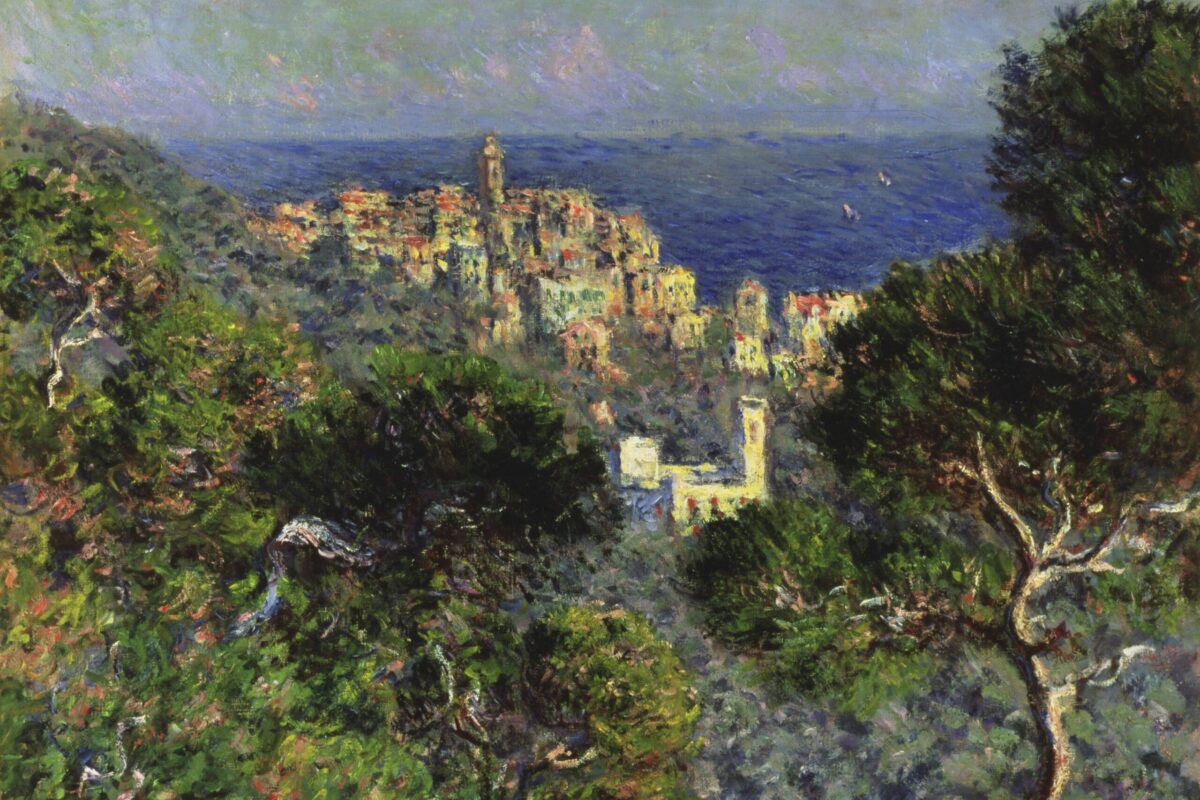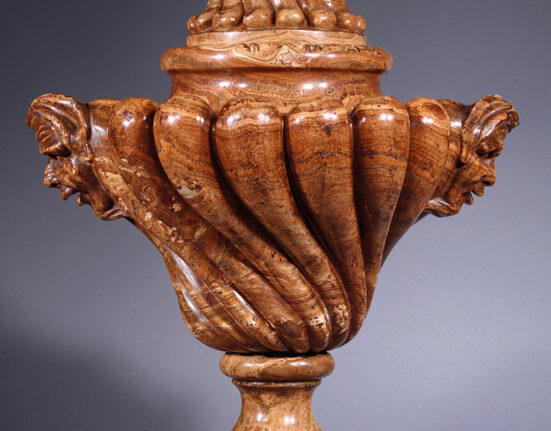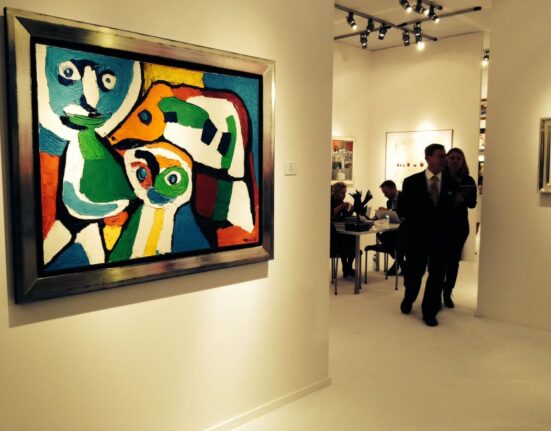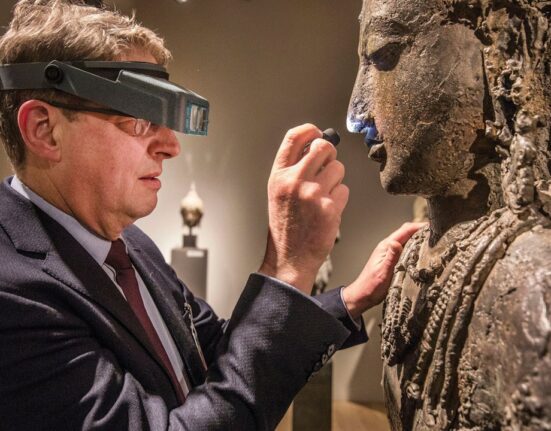An all-star extravaganza of outstanding art spanning four centuries, “Rembrandt to Van Gogh: Masterpieces from the Armand Hammer Collection” is eliciting broad appeal among visitors attending the new exhibition at the Museum of Fine Arts, Houston.
So many famous names adorn the list of artists as well as subjects in this show, a social media influencer of the day would have had a hard time — then as now — choosing which work to post first. Moreover, there are obvious tie-ins to the present. Take the 1885 portrait of a glamorous French actress considered one of the world’s first celebrities. “The Divine Miss Sarah” Bernhardt was so popular, the MFAH’s European art curator has dubbed her “the Kardashian before the Kardashians.”
When I saw Alfred Stevens’ lovely “Portrait of Sarah Bernhardt,” I too thought of a present-day celebrity — Taylor Swift. The two performing artists’ bring similarly high-energy, exuberant personalities and extraordinary popularity. “Life begets life. Energy creates energy,” Bernhardt said. “It is by spending oneself that one becomes rich.”
This quote might serve as the show’s underlying theme.
The formal portrait depicts a beautiful woman whose thick brown hair is piled atop her head, the sky-blue of her eyes a match for the silk ribbon wound around her neck.
The visiting “Masterpieces,” comprising 46 paintings, sculptures and works on paper from the collection of the Hammer Museum at UCLA, literally encompass a wealth of European art from the Renaissance to the early 20th century, plus several works by American artists from the late 19th to early 20th centuries. These sophisticated pieces reflect the collecting interests of the late museum founder Armand Hammer (1898 to 1990), who many Texans will remember as the longtime head of Occidental Petroleum.
Hammer obviously spent wisely on his art acquisitions. This show looks as if it could be subtitled “The Best of the Best,” cutting a well-informed swath through centuries of splendid art, with a decided French accent. The exhibition, which opens with Old Master paintings by artists such as Rembrandt and Titian, includes a multitude of outstanding 19th century French artwork from a host of A-list artists. The MFAH show presents to Houston audiences the highlights of the Hammer collection, shown together outside Los Angeles for the first time in this century, notes Gary Tinterow, the MFAH director and Margaret Alkek Williams chair.
Located on the upper floor of the Law Building, the exhibition features an abundance of lush landscapes and exquisitely painted portraits presenting a slice of life from their time. First, we’re drawn to Dutch master Rembrandt van Rijn’s portrait “Juno” (1662-65), wife of the Roman god Jupiter, depicted as a baroque queen in a costume glittering with jeweled adornment. The painting is admired in the accompanying wall text for its “highly differentiated applications of paint” evoking “an astonishing number of textures” in the artist’s distinctive chiaroscuro technique.
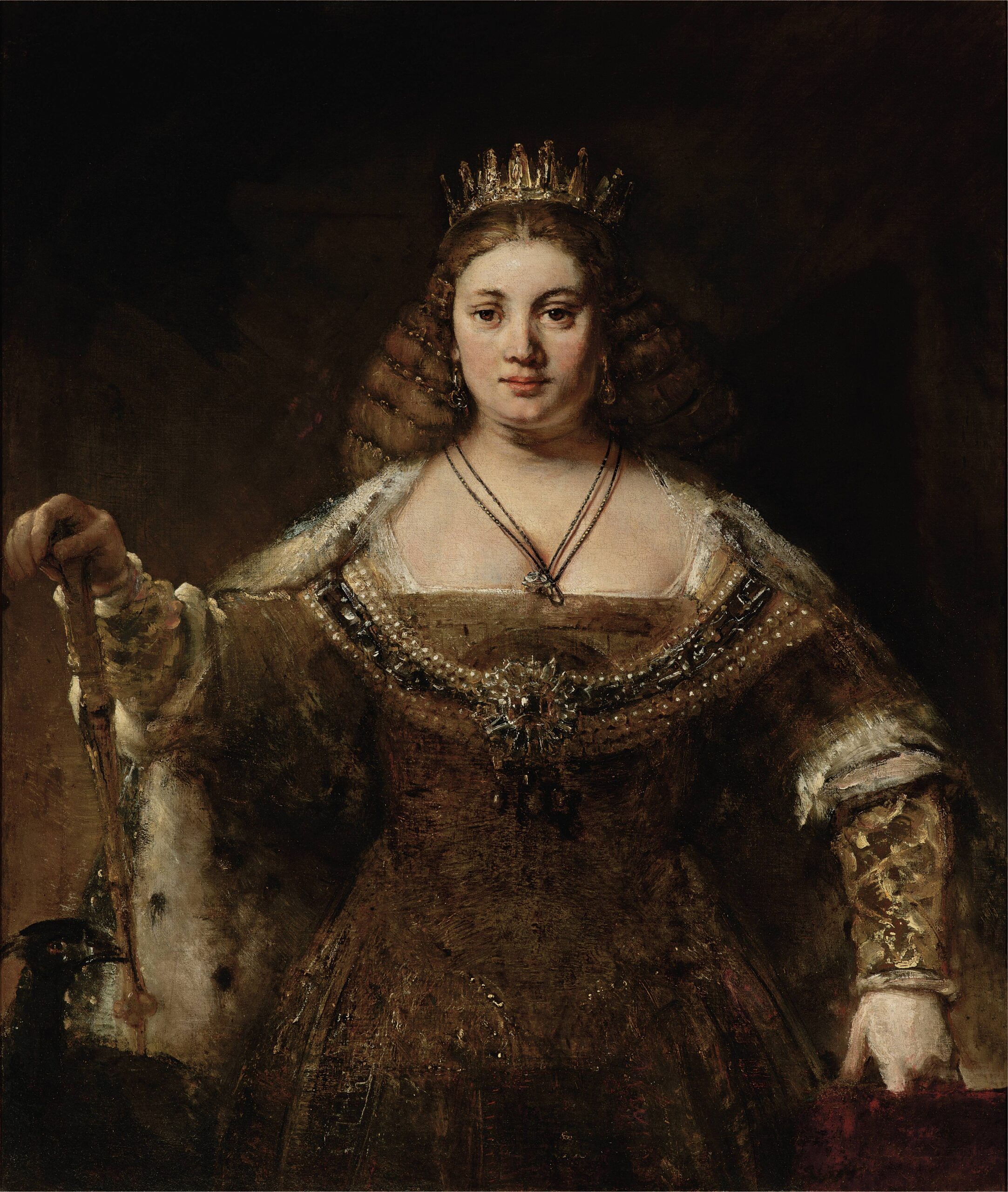
Nearby, we see Rembrandt’s “Man Holding a Black Hat” (1637), with text pointing out the artist’s expertise in capturing the glistening surface of the sitter’s moire coat and the delicacy of the lace in his immaculate white collar.
“Portrait of a Man in Armor” (c. 1530) by the brilliant Venetian Renaissance artist Tiziano Vecellio (known as Titian) portrays the sitter in a scarlet coat under an elaborate set of gleaming armor, said to denote the young man’s status as a powerful, wealthy nobleman. His portraits are “masterpieces of technical bravura” and show a psychological understanding of the sitter’s mind, according to the accompanying text.
Further exhibition highlights represent works of the 19th century French Barbizon School, Symbolist and Realist painting, with selections by such greats as Jean-Francois Millet, Camille Corot, Gustave Moreau and Honore Daumier. There are also Impressionist and Post-Impressionist paintings, including works from Impressionist founder Claude Monet, Camille Pissarro and Edouard Vuillard. Not to mention several 18th and 19th century portraits by American artists such as Gilbert Stuart.
Standouts Among the Art All-Stars
Challenged to pick five standouts among the dazzling plethora of outstanding works, MFAH European art curator Dr. Helga Aurisch recommends the two Rembrandt portraits, Vincent Van Gogh’s “Hospital at Saint-Remy” (1889), Monet’s “View of Bordighera” (1884) and Camille Pissarro’s “Boulevard Montmartre, Mardi Gras” (1897).
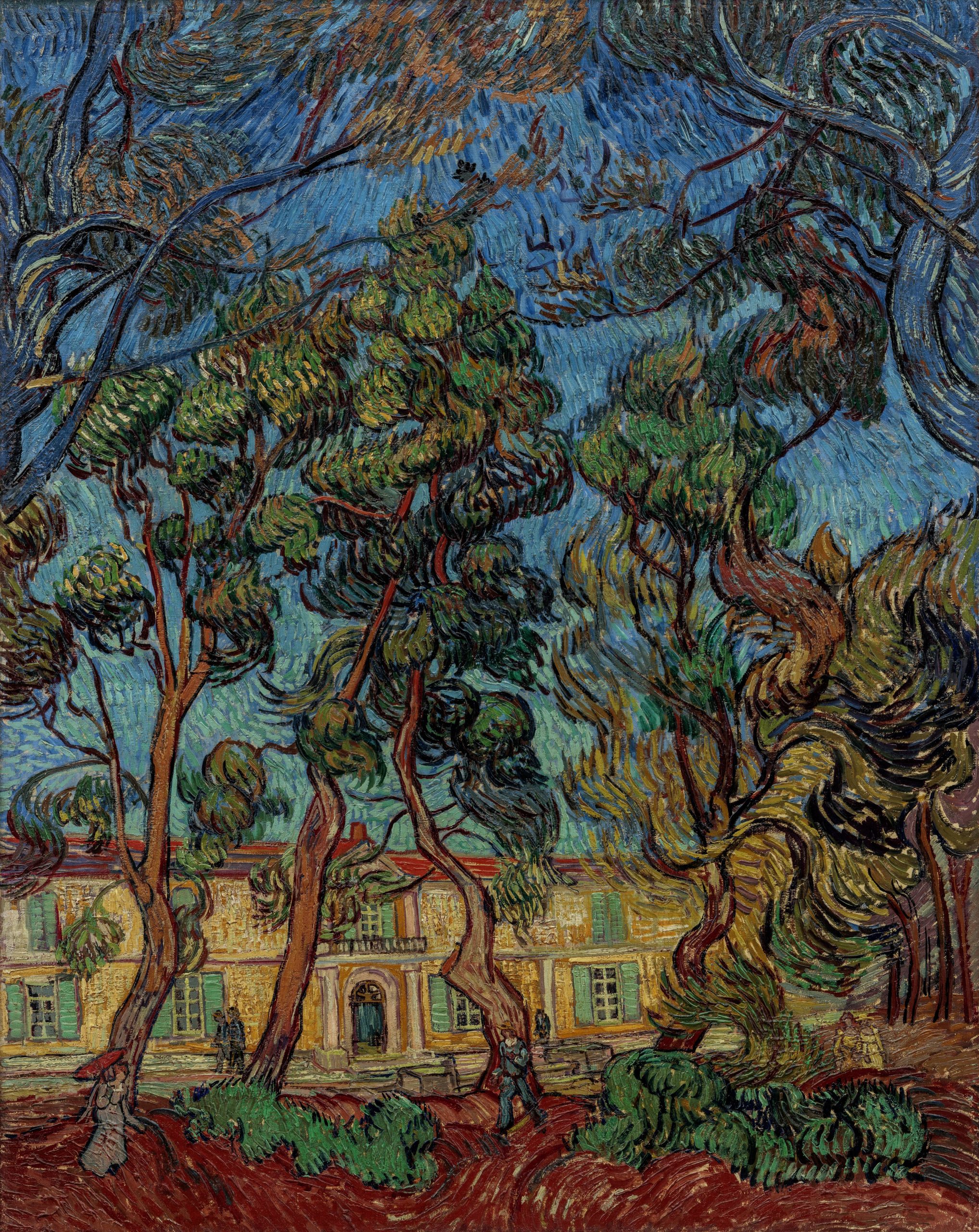
It’s easy to see why Van Gogh’s brightly colored “Hospital” gathers small knots of admirers on an ongoing basis. Its thick impasto strokes of bold colors seem to reflect a surge of positive energy as the artist worked outside the asylum in which the Dutch artist was a patient, picturing the yellow, manor-like structure behind a stand of trees with swirling green branches prominent against a bright-blue sky.
And who could fail to love Monet’s view of the idyllic little town of Bordighera? The French Impressionist presents a charming, storybook-like perspective from a distance of sunlit Bordighera, a small Italian coastal city near the French border. Looking through Monet’s eyes, this lovely vision conjured up the alluring grandeur of views from luxe “dream property” seen in the “pink paper,” FT Weekend for me.
Returning to urban life, Pissarro’s vivid depiction of Boulevard Montmartre at Mardi Gras, seen from an upper-floor window, lets us join the merriment from on high as we view a big crowd watching a parade on the main boulevard of the artist’s quarter in Paris.
Dr. Aurisch noted that Armand Hammer collected one artist in depth: Honore Daumier, the talented French painter, sculptor and printmaker celebrated as “the Michelangelo of caricature.” Daumier famously satirized 19th century French politics, its justice system and society, particularly those whom he viewed as pretentious and hypocritical. Discerning observers have often seen parallels to present-day subjects over time.
Daumier had a special knack for sending up self-serving, pompous legislators, judges and lawyers with well-drawn closeups of blasé, pretentious facial expressions. Don’t miss the series of satirical bronze busts modeled after members of the Chamber of Peers of King Louis-Philippe’s July Monarchy (1830-48); several hilarious lithographs; and the painting depicting jurists in the Palais de Justice called “The Lawyers” (1860), which bears a resemblance to “A Meeting of Lawyers” (also 1860) in the standing Beck Collection at the MFAH.
Among the lithographs, be sure to look for “The Legislative Belly” (1834), whose Hammer Collection title helpfully adds the explanatory text: “View of the ministerial benches in the improstituted house of 1834.”
For a venture into the mystical realm, look for Symbolist Gustave Moreau’s “Salome Dancing before Herod” (1876) and “King David” (1878), both highly ornate, shadowy scenes so powerfully evocative of their Biblical legends, they seem to emanate wafts of dizzying incense.
In “Salome,” the young femme fatale, holding a white lotus, extends her arm to point dramatically off-stage as she awaits the quid pro quo of John the Baptist’s head in exchange for the dance she’s just performed for her stepfather. Nearby, on the opposite side of the good/evil spectrum, King David looks down kindly on an angel at his feet.
Next, another dreamy vista beckons in Camille Corot’s “Morning” (1865), a mythical landscape in which a young woman plays with winged cherubs flitting about a dark glade as pale light breaks in a patch of sky behind her. This appears to be a pictorial reference to the “child of morning, rosy-fingered Dawn” of Homer’s “Odyssey.”
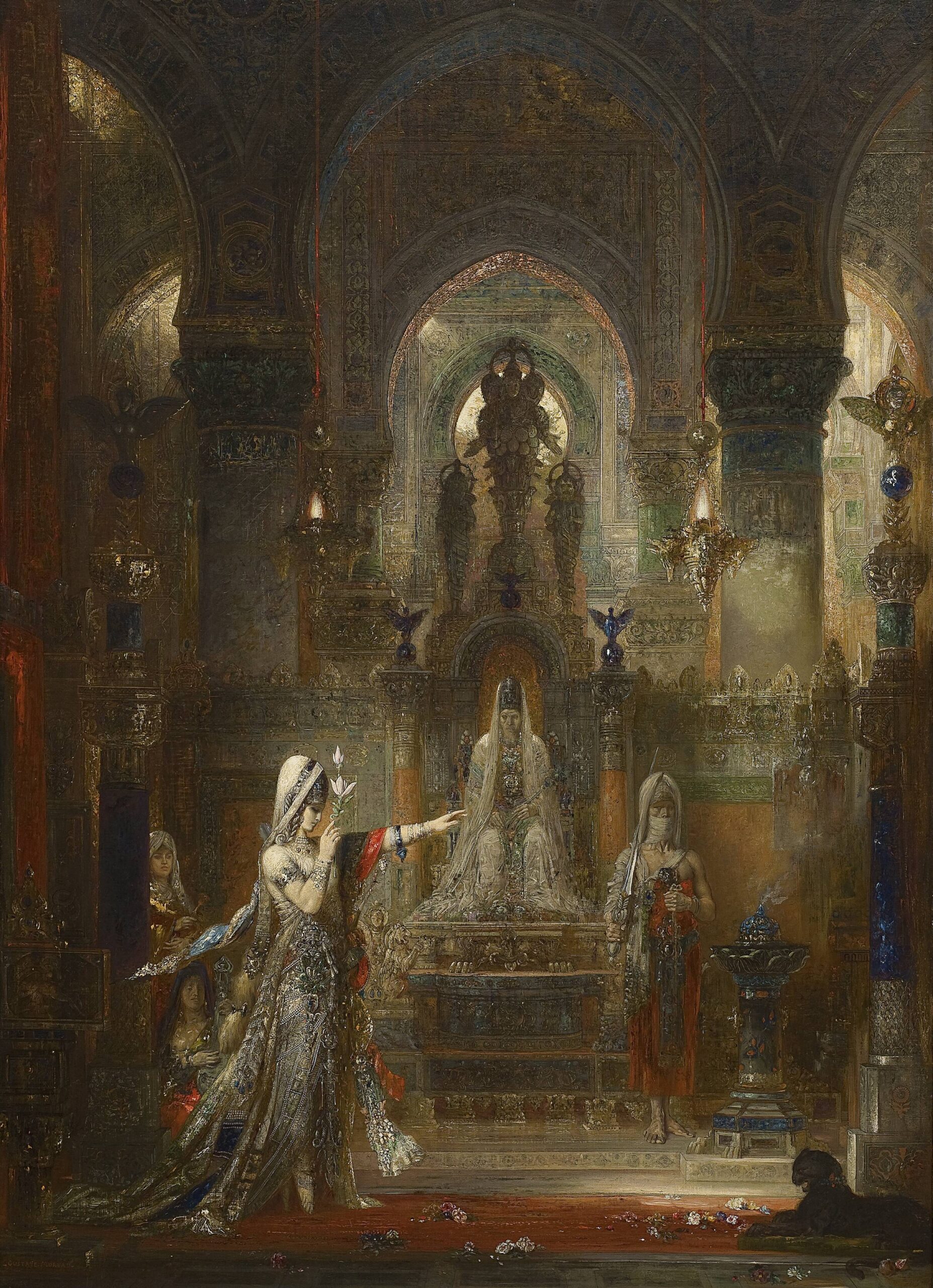
Under Henri Fantin-Latour’s shadowy “Portrait of Miss Edith Crowe” (1874), we find his thoughtful quote: “One paints people like flowers in a vase, happy just to depict the exterior as it is — but what of the inner life? The soul music playing behind the veil of flesh; one cannot paint it, but one can make it heard. . . or at least try, to show that you have thought of it.” The portrait stands in contrast to the paintings at left: floral still lifes for which Fantin-Latour was best known.
At the end of the show, a large vertical painting by Edouard Vuillard, “Study for La Place Vintimille, rue de Vintimille” (1909-10), gives us a long view down a Parisian street leading to what is now called Place Adolphe-Max from an upper window of the apartment he and his mother shared in the 9th arrondissement. The painting was commissioned to become one of four decorative panels for a client’s home, a purpose for which Vuillard was well suited, as he was renowned for his beautiful portrayals of domestic interiors.
For this project, Vuillard created four perspectives during different seasons of the urban landscape culminating in a park containing a statue of composer Hector Berlioz in Square Berlioz.
Art lovers should make plans to see this fine MFAH exhibition full of celebrated masterpieces at least once before it closes on January 21.

